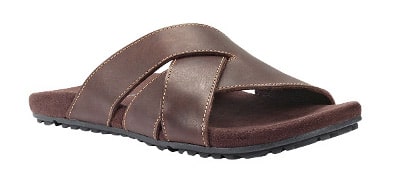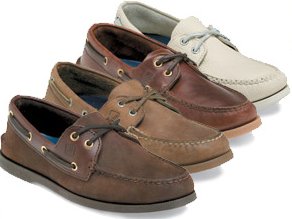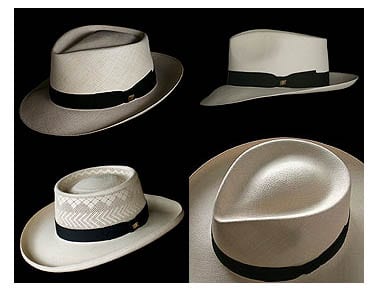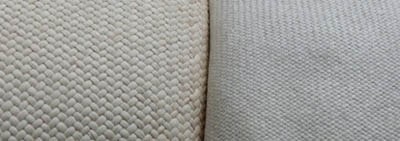What to Wear Over Dress Shirt in Summer

Welcome to Part II in our hot weather dressing series. In this article we'll cover general guidelines to remember when dressing for the heat and specifically get into hot weather headwear, footwear, and lower body clothing. If you haven't read it already, please make sure to read A Man's Guide to Summer Dress Part I before diving into this article. Although I try to make these articles capable of being stand alone pieces, they do build off each other and are best read in order.
Starting Where We Left Off
In Part I we spoke about the three things that you should remember when dressing for hot weather: 1) keep it clean, 2) keep it light, and 3) keep it understated. Building off those three guidelines, we'll expand with two more.
4) Natural Fibers – When selecting the clothing you'll wear in hot weather, always check the label to see what the garment is made from. Despite all the advances we've made over the last one hundred years, we have not yet developed an affordable alternative to nature's cellulose based fabrics. Quality plant fiber fabrics, with cotton being the most popular, have for over a millennia successfully wicked away heat and provided protection from the sun. The natural properties of plant fiber fabrics allow them to dissipate heat and pass moisture through – exactly what you want when the temperature rises.
5) Loosen-up – Please note that I do not advise you to wear your clothing two sizes too big. What we are aiming for is enough room to allow air flow as you move about normally. Tight clothing that hugs the body, especially if closely woven, will not allow air to flow over the skin. You want to encourage airflow so that the sweat on your skin evaporates.
Typically when I wear a sport jacket and dress shirt, I'll unbutton my cuffs to allow more airflow up into the sleeves. I'll also refrain from wearing a tie and instead wear a v-neck undershirt with one to 2 buttons left undone. FYI, this is where a pocket square comes in very handy as it adds a bit of color and lets others know you chose not to wear a tie, not that you forgot one.
Hot Weather Clothing Specifics
Lower Body Menswear – Shorts, Jeans, Chinos and Dress Slacks
Shorts
Shorts are casual-wear, period. No matter how you dress them up they are not in the same league as trousers made from a similar fabric. Outside the US they are not universally accepted as appropriate for wear in public; many still view them as children's wear or suitable only when worn for sport. Looking to make a strong first impression? Think twice about wearing shorts. That being said, shorts are not going anywhere and are accepted as casual weekend and active wear throughout the US.
How should shorts fit? – For summer wear anything that sits 3 inches above the knee (give or take 2 inches) is perfect – higher it starts to enter the territory of gym shorts, lower and they begin to look like capris…..which along with jean shorts men should always avoid. Shorts should fit with two to four inches of room in the hips depending on personal preference.
What fabrics? – Short fabric should be cotton; not only is it the perfect fabric for hot weather, but its durable properties allow you to wash it a bit rougher in order to remove any grass or food stains. As for summer colors, think light and airy. Light khaki, tan, and even white if you're not attending a bar-b-que are fine. Madras, a summer staple with Indian origins, is a multi-colored patchwork fabric made from very lightweight cotton. It was introduced into the US market over 50 years ago and has established itself as colorful but safe summer classic for the younger man.
Short style – The simpler the shorts, the dressier they will look. Hence cargo shorts with their oversized pockets, logos, and loops are the most casual and best reserved for the young man. On the other end of the spectrum are the sleek dress shorts you see for golfing – complete with belt loops and pleats; these are meant to be worn with shirts tucked in and are made from tighter woven cotton fabrics.
What to wear with shorts – Shorts naturally are at home with t-shirts and sandals. Most of us consider it dressing them up when we wear them with a polo shirt, so pairing them with anything more formal than a short-sleeve button up sport shirt requires a bit of sartorial sophistication. Be very careful when looking to pair shorts up with garments such as a blazer – it's a look very few can pull off. Better to move up and put on a pair of trousers.
A quick note on Jeans, Chinos, and Trousers – since we just covered these in the wardrobe series part II, I'll simply focus on these clothing articles as they pertain to hot weather wear.
Denim Jeans & Heat
Blue jeans are not my first choice when it comes to lower body wear on a day exceeding 90 degrees. Although normally made from cotton, their extremely tight weave and treated fabric inhibit much of the positive attributes of the fabric and with no vents they can trap in heat and cause excessive sweating. The only exception would be very lightweight denim that has been washed extensively.
Cotton Chinos & Heat
Often a better choice than jeans as cotton chinos have a looser weave that allows more air to flow between the fabric and your legs. A gentleman who finds he'll need to be wearing these throughout a hot summer would be well advised to ensure the length of his chinos are hemmed with no break. This slightly short length may not be "sartorially correct" to some; however, it will promote airflow when he walks, separating the pant leg from the shoe.
Dress Trousers & Heat
Tropical wools or high end cotton weaves should be the fabrics you look for in a good pair of summer dress trousers. By far these are some of the best lower body coverings for summer; lightweight and breathable, they promote proper airflow and resist trapping heat. Wool will drape better and resist wrinkling but is more fragile and less breathable than equivalent weight cotton. Cotton is usually less expensive, more durable, and found in more lively colors, but unless custom made, is often less flattering to a man's figure due to the stiffness of the fabric.
Hot Weather Footwear
Sandals – One of man's oldest forms of footwear, they are nonetheless a very informal type of footwear and should be worn accordingly. Coming in a wide variety of styles, they range in their level of casualness based on the extent they show the feet and from what material they are made (leather being dressier than synthetic materials). Hence a pair of plastic flip flops are laid back pool-wear, leather flip flops could be worn to a beach party, while strapped leather sandals are fine for a casual summer get-together with good friends. Keep your toenails clipped and clean when out and about in sandals. Wearing socks with one's sandals is almost universally considered a faux pas and rather defeats the purpose of wearing sandals in the first place.

Canvas Sneakers – A casual choice perfect for hot weather. These shoes are often made from natural fibers and are light enough to allow your feet to breathe. They go great with shorts, especially when paired with low cut socks, and are even better for wear with jeans and chinos.

Summer Canvas Sneaker
Boat Shoes – Boat shoes serve a practical purpose – their soles are cut to help you avoid slipping on and marking the delicate surface of watercraft. And like many practical tools, they escaped their natural boundary years ago and have established themselves as a piece of classic summer footwear, due in large part to their variety of color and that they can be worn sockless.

Italian Loafers & Moccasins – I specified the Italian Style here as typically you see these dress shoes made with lighter and more delicate leathers than their English or American counterparts. Designed for wear in a Mediterranean climate, you'll find the thin subtle leather very comfortable despite the heat. However, be careful as this type of footwear is very susceptible to damage from the elements. Perfect to wear with dress slacks.
For other dress shoes such as spectators or saddle shoes, make sure to check out these classic AoM articles Dressing for the Kentucky Derby and How to Build Your Wardrobe Part II.
Hot Weather Headwear
The first step in selecting a hot weather hat is to understand your personal headwear needs. Ask yourself under what conditions you are going to be using the hat and whether you are concerned with style, function, or both. Functional hats that simply protect you from the sun are cheap and easy to find; stylish hats that double as functional hot weather companions are more difficult to track down. However the rewards far outweigh the time spent researching and locating the perfect piece of personal shade.

Panama Hats – Photos Courtesy of Brent Black Panama Hats
Styles & Shape – Panamas, Straw Fedoras, Tilleys, and Linen Caps are great options available to the man interested in wearing stylish headwear that serves the purpose of protection from the sun. When you have to stand in the Arizona noon sun on a 100 degree day, the right hat can help you shave 10 to 20 degrees off by providing you a personal section of shade over your body's most exposed area. Depending on your needs, the brim's size can vary widely; my advice here is that you should ensure the brim is large enough to keep the sun off your face and neck when the sun is at its peak.
Material & Weave – The best summer hats are made from plant fibers and woven in a way that they can block light, retain their shape, and allow airflow. Usually this is why you see such a wide range in price – a panama hat woven from a low quality fiber in one day will cost 1/100th that of a hat woven from a quality fiber that takes a full month to weave and and shape.

This difference in weave is what separates a $20 hat from $200 one.
Airflow – Beware of gummed-up straw hats that do not allow airflow through the crown. Despite feeling lightweight in build, they are like wearing a plastic bag on your head and more suited for show than function. Vents are a good thing, mesh crowns are even better! High quality Panama hats use a weave pattern that although appearing solid does allow airflow – however, be prepared to pay for this mix of style and function.
Fit – You have to get your hat's fit right. Anything too tight and you'll be feeling light headed before noon; too loose and the hat will be resting on the wrong areas of your head and will not promote proper airflow. Look for a quality tanned leather sweatband; fabric sweatbands are OK but will need replacing after extended wear. Elastic sweatbands are found on lower quality hats – however for a first time price sensitive buyer they are an acceptable compromise.
Other Hot Weather Tips
Don't forget the handkerchief – It's not just for your nose, and the handkerchief does a much better job of cleaning off sweat than your shirt sleeve. Visit this AOM classic article on handkerchiefs.
Bring a change of clothes – Although it requires a bit of forethought, bringing an extra set of clothing to change into can enable you to look your best as the day's events unfold. There is nothing like breaking up a hot day with a cool shower and then changing into a new set of clothing. You'll be refreshed and reinvigorated.
What are your tips on how to stay cool in hot weather? We'd love to hear from you in the comments section below!
Written by
Antonio Centeno
President, A Tailored Suit
Articles on Mens Suits – Dress Shirts – .
Join our Facebook Page & Win Custom Clothing
Previous Next
stanfillnaturawrove.blogspot.com
Source: https://www.artofmanliness.com/style/outfit-guide/guide-to-summer-dressing-2/
0 Response to "What to Wear Over Dress Shirt in Summer"
Post a Comment